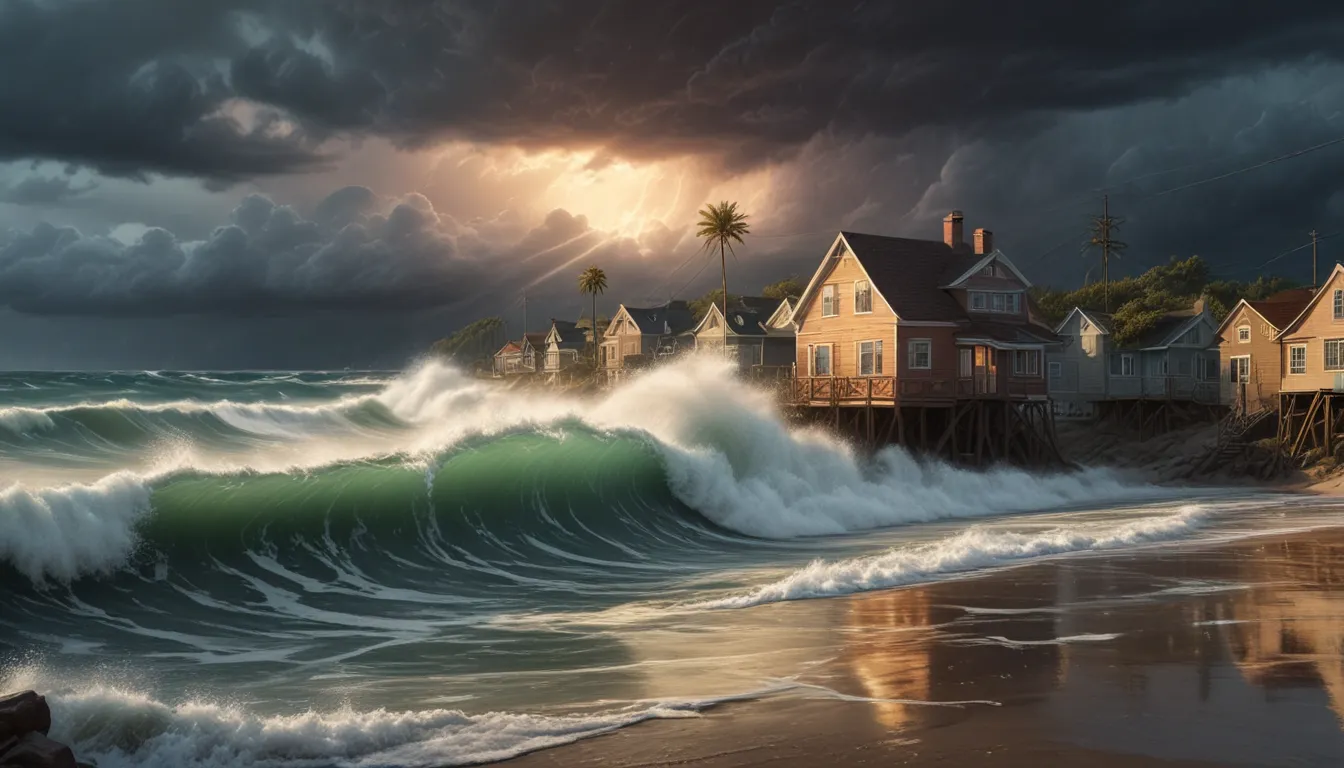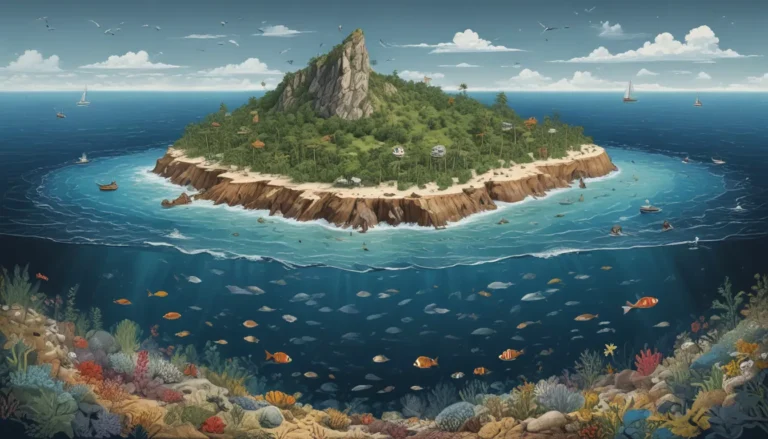A Note About Images: The images used in our articles are for illustration purposes only and may not exactly match the content. They are meant to engage readers, but the text should be relied upon for accurate information.
When it comes to severe weather events like hurricanes and typhoons, one of the most destructive phenomena to watch out for is a storm surge. These powerful walls of water can cause extensive flooding, property damage, and even loss of life in coastal areas. To better prepare and protect vulnerable regions, it’s essential to have a thorough understanding of storm surges. In this article, we will uncover eight astounding facts about storm surges, from their formation to their devastating impacts.
Dive into the World of Storm Surges
Storm surges are not only fascinating but also critical to comprehend for the safety of communities residing in coastal areas. Let’s explore some essential facts to shed light on these powerful natural occurrences.
Storm Surges: The Most Dangerous Part of Hurricanes
When a hurricane makes landfall, it can bring about massive coastal flooding due to storm surges. These surges are a result of the combination of powerful winds and low atmospheric pressure, leading to a rise in sea level. The impact of storm surges can be devastating, causing extensive damage to infrastructure and homes along the coastline.
Towering Heights of Storm Surges
One remarkable aspect of storm surges is their sheer size. In extreme cases, these walls of water have been known to reach heights of over 20 feet. This immense force of water can engulf entire communities and pose significant risks to anyone in its path.
Extending Inland: The Reach of Storm Surges
Storm surges are not limited to the coastline; they can travel several miles inland, catching people off guard in areas far from the coast. This ability to extend inland adds to the danger posed by storm surges during severe weather events.
Influencing Factors Behind Storm Surges
Several factors contribute to the severity of storm surges. The intensity and size of the hurricane, the shape of the coastline, the tidal cycle, and the depth of the ocean all play a role in determining the magnitude of the storm surge. Understanding these factors is crucial for predicting and preparing for the potential impact of storm surges.
Erosion and Its Long-Lasting Effects
Due to the immense force of water, storm surges can erode beaches and shorelines, causing significant damage to coastal ecosystems. This erosion can have long-lasting effects on the environment, requiring extensive efforts to restore and protect vulnerable coastal areas.
Stay Informed with Storm Surge Warnings
To ensure public safety, meteorological agencies issue storm surge warnings ahead of an approaching hurricane. These warnings provide crucial information on the potential height and timing of the storm surge, enabling residents and authorities to make informed decisions and take necessary precautions.
Historical Tragedy: The Deadliest Storm Surge
The Bay of Bengal Cyclone in 1970 resulted in one of the deadliest storm surges in recorded history. This devastating event, with a storm surge estimated to have reached 20 feet in height, claimed the lives of approximately 300,000 people in coastal areas of Bangladesh.
Climate Change and the Future of Storm Surges
With the ongoing effects of climate change, there is growing concern that storm surges may become more frequent and intense in the future. Rising sea levels and warmer ocean temperatures contribute to the potential for more destructive storm surges, emphasizing the need for proactive measures to mitigate their impact.
Conclusion:
In conclusion, storm surges are a significant threat to coastal areas during severe weather events. Understanding their nature, causes, and potential consequences is crucial for preparedness and response efforts. By staying informed and taking necessary precautions, we can minimize the risks associated with these powerful natural phenomena.
FAQs
Q: What causes storm surges?
A: Storm surges are caused by hurricanes, cyclones, or intense storms that generate strong winds and low-pressure systems.
Q: How high can storm surges get?
A: Storm surges can reach heights of 30 feet or more, causing massive flooding and destruction of infrastructure along the coast.
Q: Can storm surges occur independently of hurricanes?
A: While storm surges are typically associated with hurricanes, they can also occur during intense storms with strong onshore winds.
Q: Are storm surge warnings issued in advance?
A: Yes, meteorological agencies issue storm surge warnings to alert residents and provide time for evacuation.
Q: Has there been a notable storm surge event in recent history?
A: Yes, the storm surge associated with Hurricane Katrina in 2005 reached heights of up to 28 feet, causing widespread devastation along the Gulf Coast.
Q: How does climate change affect storm surges?
A: Climate change is expected to increase the frequency and intensity of storms, leading to a higher risk of storm surge events.
Q: Can engineering measures prevent storm surges?
A: Coastal engineering measures such as seawalls, levees, and storm surge barriers can help mitigate the impacts of storm surges, but they are not foolproof solutions.
Stay Curious, Stay Safe
As we continue to learn more about storm surges and their impacts, we empower ourselves to take proactive steps in safeguarding our communities. Remember, knowledge is a powerful tool in the face of nature’s forces. Stay curious, stay informed, and above all, stay safe.






